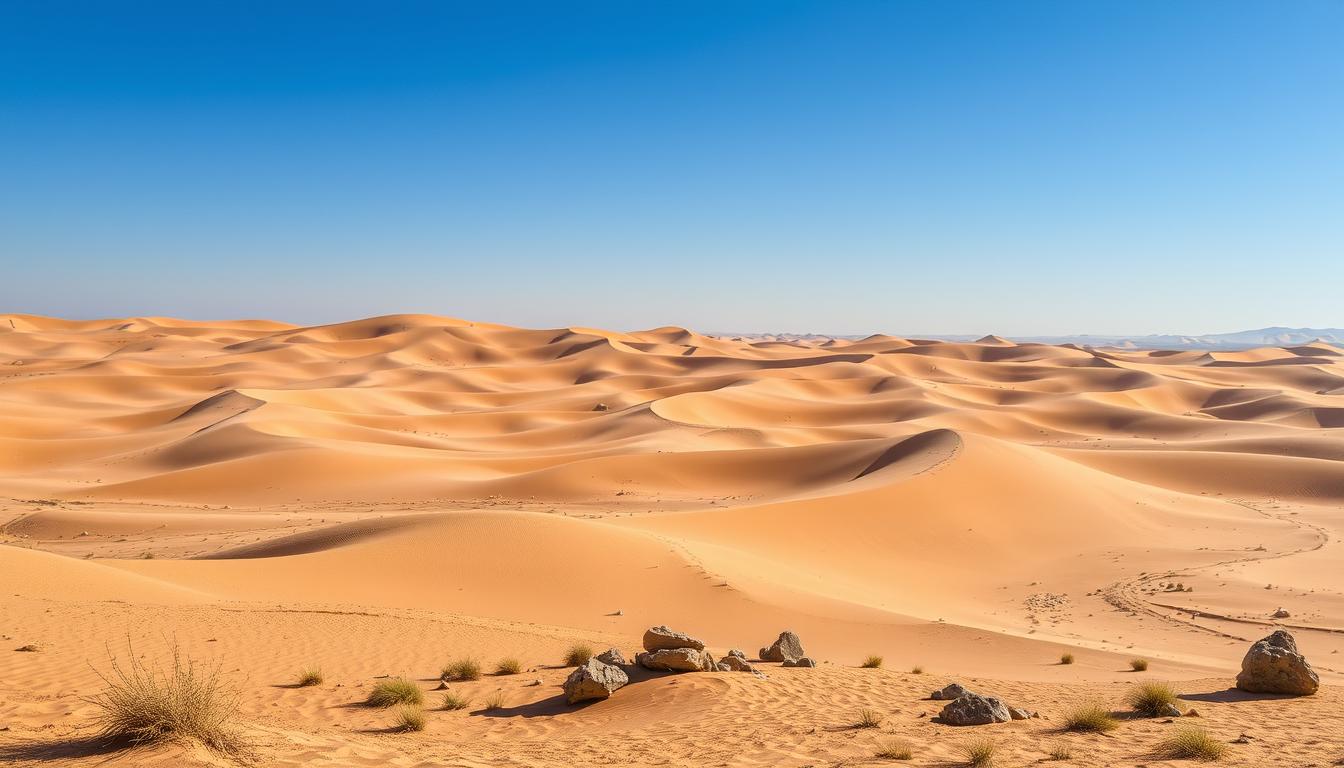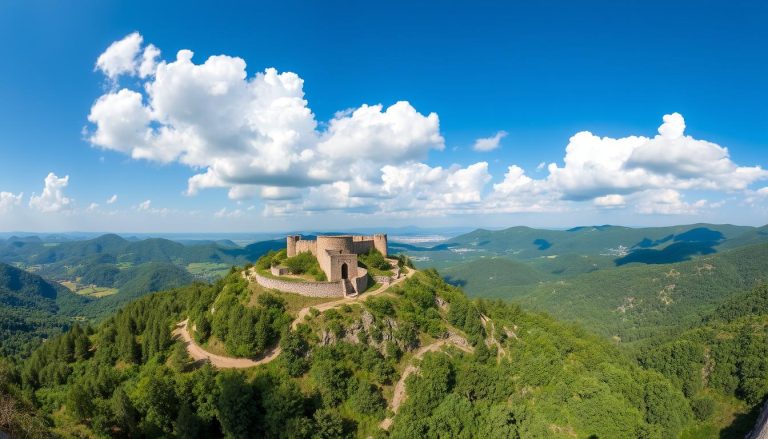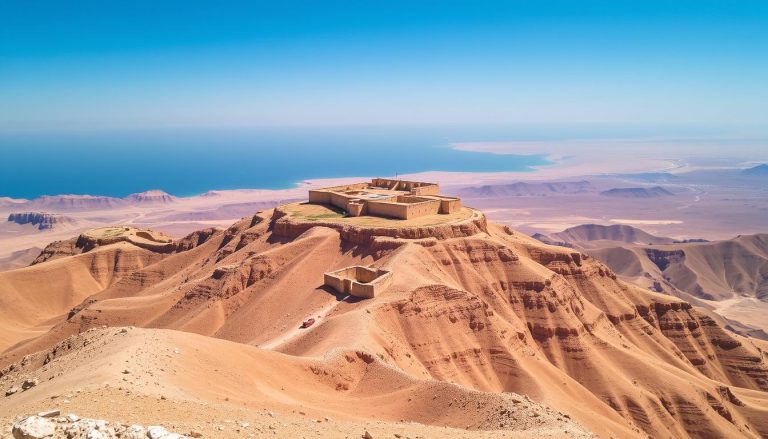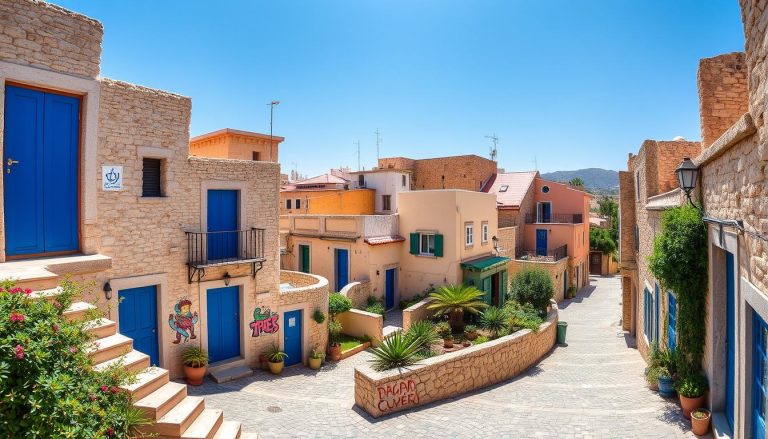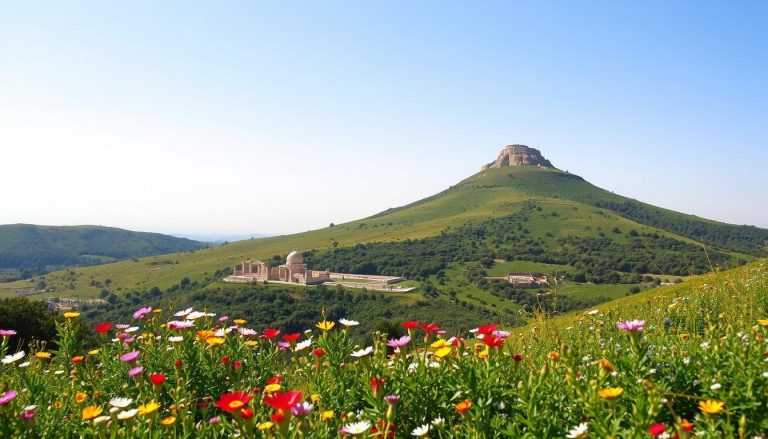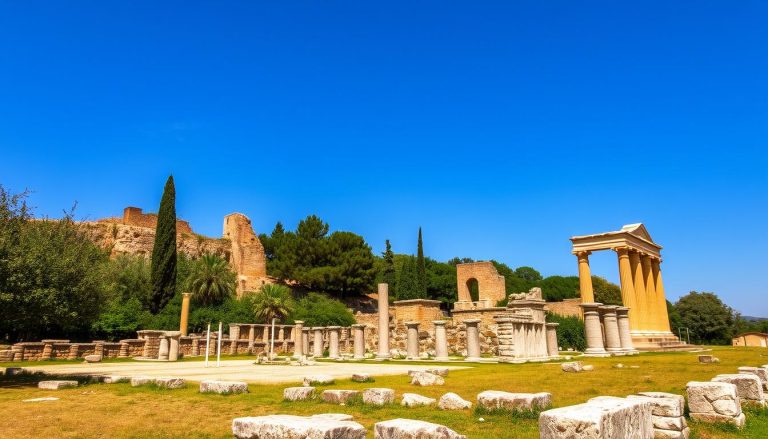Are you ready to explore the hidden gems of the Negev Desert in southern Israel? Beersheba, the largest city in this arid landscape, offers a captivating blend of ancient history and modern attractions. As the ‘Capital of the Negev,’ this rapidly growing metropolis invites you to discover its rich cultural heritage, stunning natural wonders, and thriving urban vibrancy. But what makes Beersheba a must-visit destination in Israel? Let’s uncover the best things to do in this enchanting desert city.
Key Takeaways
- Beersheba, the largest city in the Negev Desert, is a captivating blend of ancient history and modern attractions.
- The city offers a rich cultural heritage, stunning natural wonders, and a thriving urban atmosphere.
- Beersheba is a popular tourist destination in Israel, known for its museums, monuments, and historic landmarks.
- Visitors can explore the city’s Ottoman-era architecture, contemporary art collections, and traditional Bedouin experiences.
- Beersheba is the fourth most populous metropolitan area in Israel and has experienced rapid population growth in recent years.
Introduction to Beersheba: Capital of the Negev
Beersheba is in the heart of the Negev Desert. It’s the main city of southern Israel. Once quiet, it’s now a lively center of Israeli culture and home to Ben Gurion University.
The city’s location has made it grow fast. Young people come for its food and fun. Now, Beersheba has cool bars, cafes, and restaurants.
Beersheba also has lots of history and culture. You can see ancient sites and markets. It’s a great place to learn about the Negev.
“Beersheba is a desert city, but it’s also a city of the future. It’s a place where ancient history and modern innovation come together in a unique and captivating way.”
Beersheba is changing and becoming a top spot to visit. It offers a unique desert city experience. You can dive into Israeli culture and see what this university town has to offer.
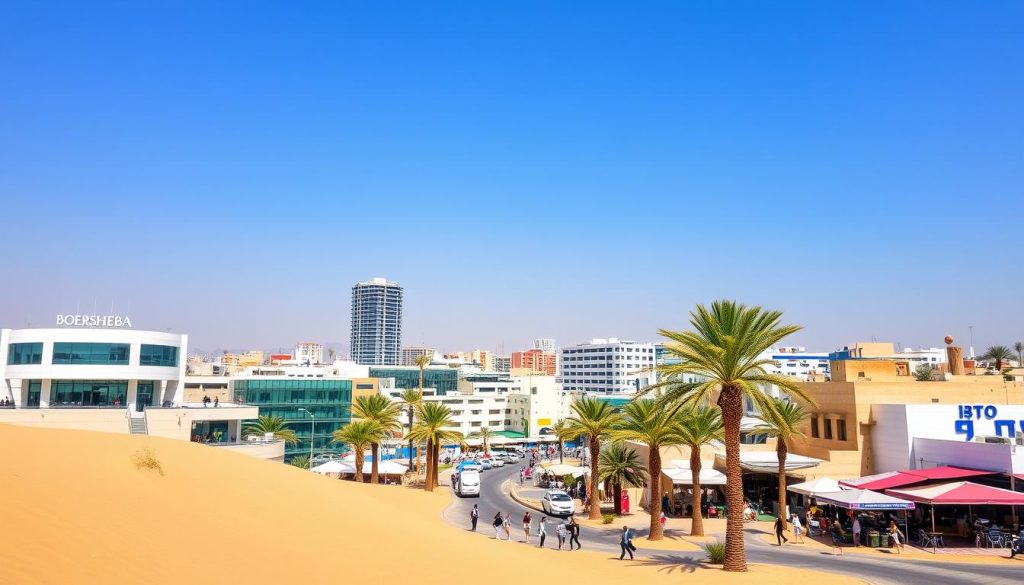
Historical Background of Beer Sheva
Beer Sheva, the capital of the Negev region in Israel, has a long and interesting history. It was founded in the 20th century by the Ottoman Turks. Since then, it has grown a lot and become a center of Israeli history and Biblical archaeology.
Ottoman Period and City Development
The Ottoman Empire started Beer Sheva as a planned city in 1900. It was for strategic reasons to control the Negev region. The city’s location and many wells made it key in the area.
By the late 19th century, Beer Sheva had about 10,000 people. Most were settlers from the Ottoman Empire.
Modern Growth and Cultural Evolution
After Israel declared independence in 1948, the Arab village in Beer Sheva was either forced out or killed. Then, Sephardic and Mizrahi Jews moved in. This changed the city’s culture, making it diverse.
Biblical Significance
Beer Sheva’s history goes back beyond the Ottoman Empire and modern times. The Bible says it was where Abraham, Isaac, and the Philistines made oaths. Archaeology from the 4th century BC also shows its Biblical archaeology importance.
Now, Beer Sheva is a mix of Israeli history, Ottoman, modern, and biblical stories. It’s a lively city that draws visitors from everywhere.
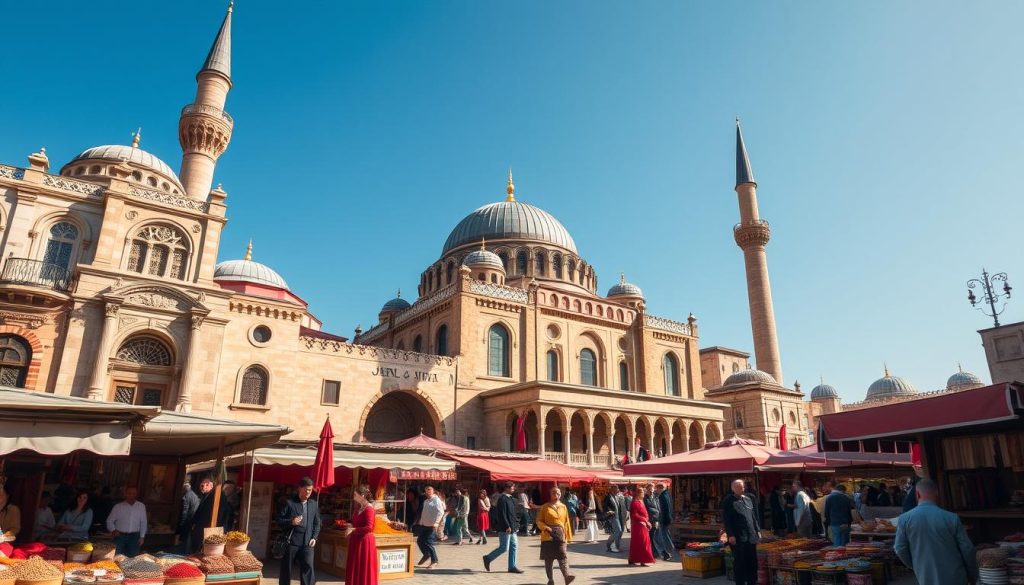
Exploring the Ancient Turkish Town
In the heart of Beersheba lies a piece of history from the Ottoman era – the ancient Turkish town. This town shows off the Ottoman Empire’s skill in building and planning cities. It gives visitors a peek into the area’s heritage sites.
Walking through its narrow streets, you’ll see stone buildings that look like they’re from another time. The original English street signs add to the real feel of Ottoman architecture. It’s like stepping back into the past.
The town’s layout is a window into the urban planning of the Ottoman era. The streets, building placement, and overall look all add to its charm. It feels like you’ve traveled back in time, discovering Beersheba’s history at every turn.
“The ancient Turkish town in Beersheba is a living testament to the architectural and urban planning prowess of the Ottoman Empire, offering visitors a unique glimpse into the region’s rich heritage.”
Exploring this historic area, you’ll notice the preserved buildings and details. It’s a place where old and new meet, inviting you to explore its stories. The weathered walls and paths hold secrets of the past.
| Key Features of the Ancient Turkish Town |
|---|
| – One- and two-story stone buildings |
| – Original street signs in English |
| – Meticulously planned urban layout |
| – Glimpse into the Ottoman architecture and urban planning |
| – Well-preserved heritage sites |
If you love history, architecture, or just appreciate old cities, visit the ancient Turkish town in Beersheba. It’s a place where history comes alive. Here, you can step back in time and dive into the rich history of this city.
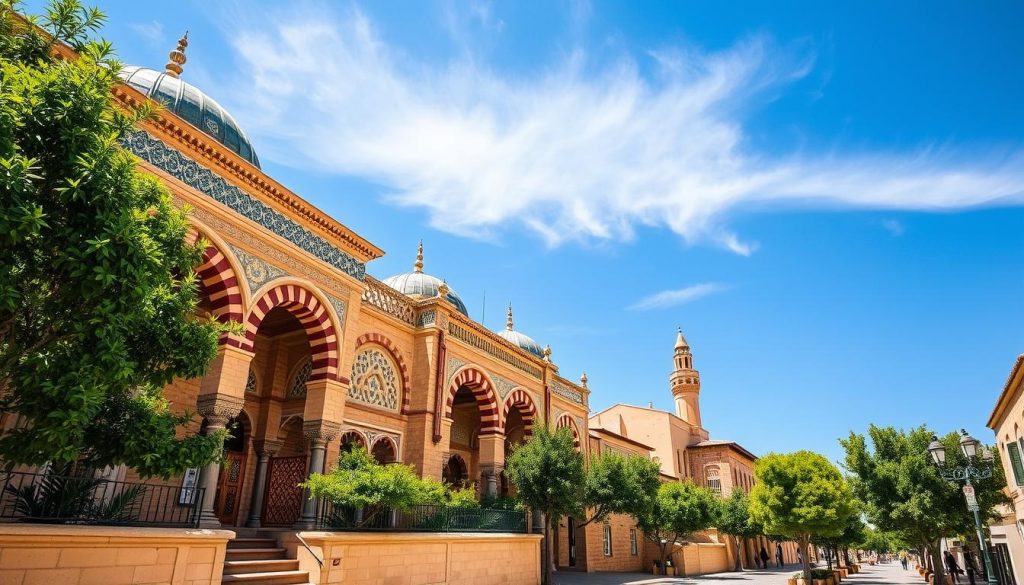
Negev Museum of Art: A Cultural Haven
In the heart of Beersheba, the Negev Museum of Art is a treasure. It showcases the rich Israeli art and cultural heritage of the area. The museum is in a building that was once a grand mosque and the Ottoman Empire’s governor’s home. It offers a mix of museum exhibits with contemporary Israeli art.
Ottoman Architecture and History
The museum’s design honors its Ottoman past. It combines old Ottoman styles with modern touches. Visitors can explore the building’s history and see the preserved details that take them back in time.
Contemporary Art Collections
The Negev Museum of Art has a great collection of works by Israeli artists. These pieces tell stories of Israel’s history and culture. It’s a place where art and history come together, attracting both art lovers and history enthusiasts.
Exhibition Highlights
The museum hosts many temporary exhibitions throughout the year. Each one offers a fresh look at Israeli art and cultural heritage. From installations to multimedia shows, there’s always something new to see. Visitors keep coming back to find more artistic wonders.
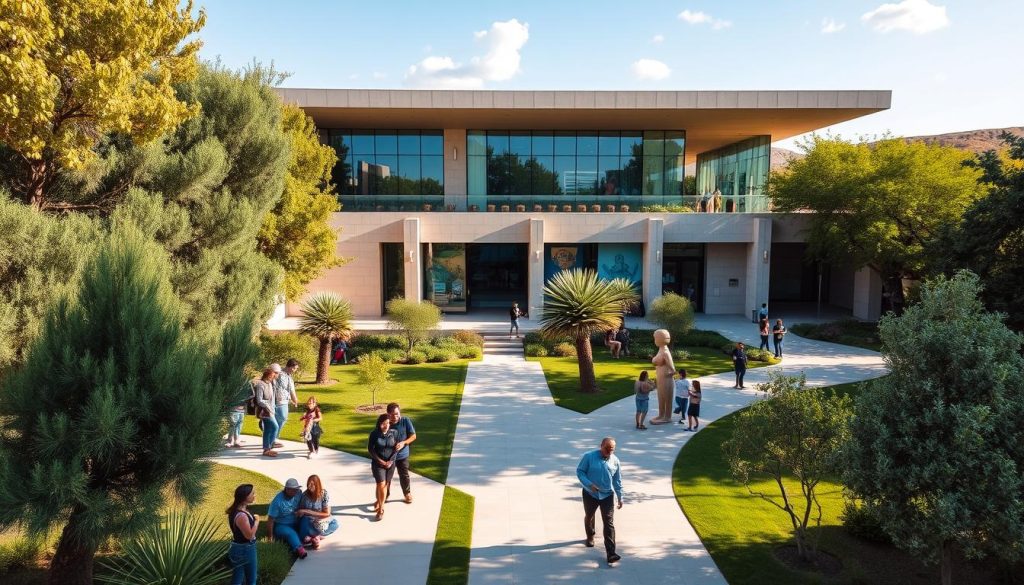
“The Negev Museum of Art is a true gem, seamlessly blending the rich history of Beersheba with the vibrant, contemporary Israeli art scene. It’s a must-visit destination for anyone seeking to immerse themselves in the cultural tapestry of this remarkable region.”
Turkish Railway Station Heritage
In the heart of Beersheba, the Turkish Railway Station is a key historical site. It shows the city’s link to the Ottoman rail history during World War I. This landmark, from 1915, lets visitors see the city’s past and its important role in history.
The station, opened under Ottoman rule in Palestine, now serves as a small rail museum. It has a photo exhibit showing Beersheba’s growth from Ottoman times to the Mandate era. You can also see a steam engine and a luxurious rail car from 1922, connecting to the city’s Ottoman rail history.
The Turkish WWI Memorial, built in 2002, adds to the station’s importance. It honors the sacrifices made during World War I, when Beersheba was key in military battles.
If you’re into historical sites, the Turkish Railway Station is a must-see in Beersheba. It’s a chance to explore the city’s past and its role in a significant time in history.
Traditional Bedouin Experience and Markets
Dive into the world of Bedouin culture in Beersheba, Israel. The Bedouin market has been alive since 1905. It’s a place where Bedouins from nearby villages sell their goods.
You can find everything from beautiful jewelry and rugs to modern clothes and tasty food. It’s a feast for your senses.
Thursday Market Highlights
Walk through the stalls and find treasures of Bedouin craftsmanship. See handmade glassware, pottery, and colorful textiles. Each item shows the Bedouin people’s rich heritage.
Chat with the vendors and enjoy the lively atmosphere. It’s a chance to learn about their culture and traditions.
Authentic Bedouin Hospitality
Experience Bedouin hospitality at the market’s traditional tents. Try Bedouin coffee or tea with local snacks like pita bread and hummus. Talk to the friendly hosts and learn about their way of life.
Local Crafts and Cuisine
Try the flavors of the Negev region. Taste Bedouin dishes like maqlouba and creamy labaneh. See the colorful and detailed handicrafts, like rugs and jewelry.
Discover Bedouin culture at the Thursday market in Beersheba. It’s a unique experience that shows the blend of old traditions and modern life in the Negev.
Tel Be'er Sheva National Park UNESCO Site
The Tel Be’er Sheva National Park is a treasure nestled east of Be’er Sheva. It’s a UNESCO World Heritage site, showcasing over 2,500 years of history. It offers a peek into the area’s rich past and cultural heritage.
At the park, you can see the ruins of an ancient city. Highlights include casemate walls, a governor’s palace, and a Hellenistic temple. There’s even a rare horned altar. The deepest well in the Negev is a standout, reaching 70 meters deep.
- The settlement at Tel Be’er Sheva began in the 4th century BC.
- The city was destroyed by the Assyrians in the early 8th century BC. It might have also been sacked by the Babylonians.
- Archaeologists started excavating in 1975. The site was opened as an archaeological park in 2003.
At the Tel Be’er Sheva National Park, you can see four-roomed houses and ancient cisterns. These give a glimpse into the lives of the city’s people. The site is near a highway, making it easy to visit. You can explore on your own or join a guided tour to learn more about this UNESCO World Heritage archaeological site.
| Highlights of Tel Be’er Sheva National Park | Key Facts |
|---|---|
|
|
If you love history, archaeology, or just want to dive into the area’s culture, visit the Tel Be’er Sheva National Park. It’s a key spot in Israel’s Negev Desert.
Modern Shopping and Entertainment
Beersheba, the capital of the Negev region in southern Israel, has changed a lot lately. It’s now a top spot for shopping and fun. The Grand Canyon Mall is a key part of this change, being the second-largest mall in the country.
Grand Canyon Mall Experience
The Grand Canyon Mall in Beersheba is huge, with over 250 stores. You can find everything from clothes and gadgets to home items and unique shops. There’s also a big food court with lots of tasty options.
For families, there’s a big playground at the mall. Kids can play and have fun while parents shop. This mix of shopping and fun makes the Grand Canyon Mall a top place to visit in Beersheba.
Urban Entertainment Options
Beersheba has more than just the Grand Canyon Mall. The city is full of fun and culture. You can find everything from movies to live shows, bars to art galleries.
- Cutting-edge cinemas screening the latest blockbusters and independent films
- Lively theaters hosting live performances, from musical productions to stand-up comedy
- Trendy bars and nightclubs offering a pulsating nightlife experience
- Art galleries and cultural centers showcasing the talents of local and regional artists
Looking for a day of shopping, a night out, or something cultural? Beersheba has it all. You can dive into the lively urban entertainment scene of this bustling Israeli shopping centers.
The Negev Brigade Monument
In Be’er-Sheva, the Negev Brigade Monument, or Andarta, catches your eye. It honors the Palmach Negev Brigade members who died in the 1948 Arab-Israeli War. Israeli artist Dani Karavan created this moving tribute.
The monument’s design is full of shapes and structures that tell the story of the Palmach and the war. It has curving lines for the desert and angular shapes for military strength. The Andarta is a modern sculpture that makes you think about the Negev Brigade’s history and importance.
The monument shows the bravery and resilience of Israelis who fought for their state. It reminds us of the sacrifices made by these soldiers. Their legacy inspires people from all over. If you love history, art, or just want to learn about Israel’s past, the Andarta is a must-see in Be’er-Sheva.
